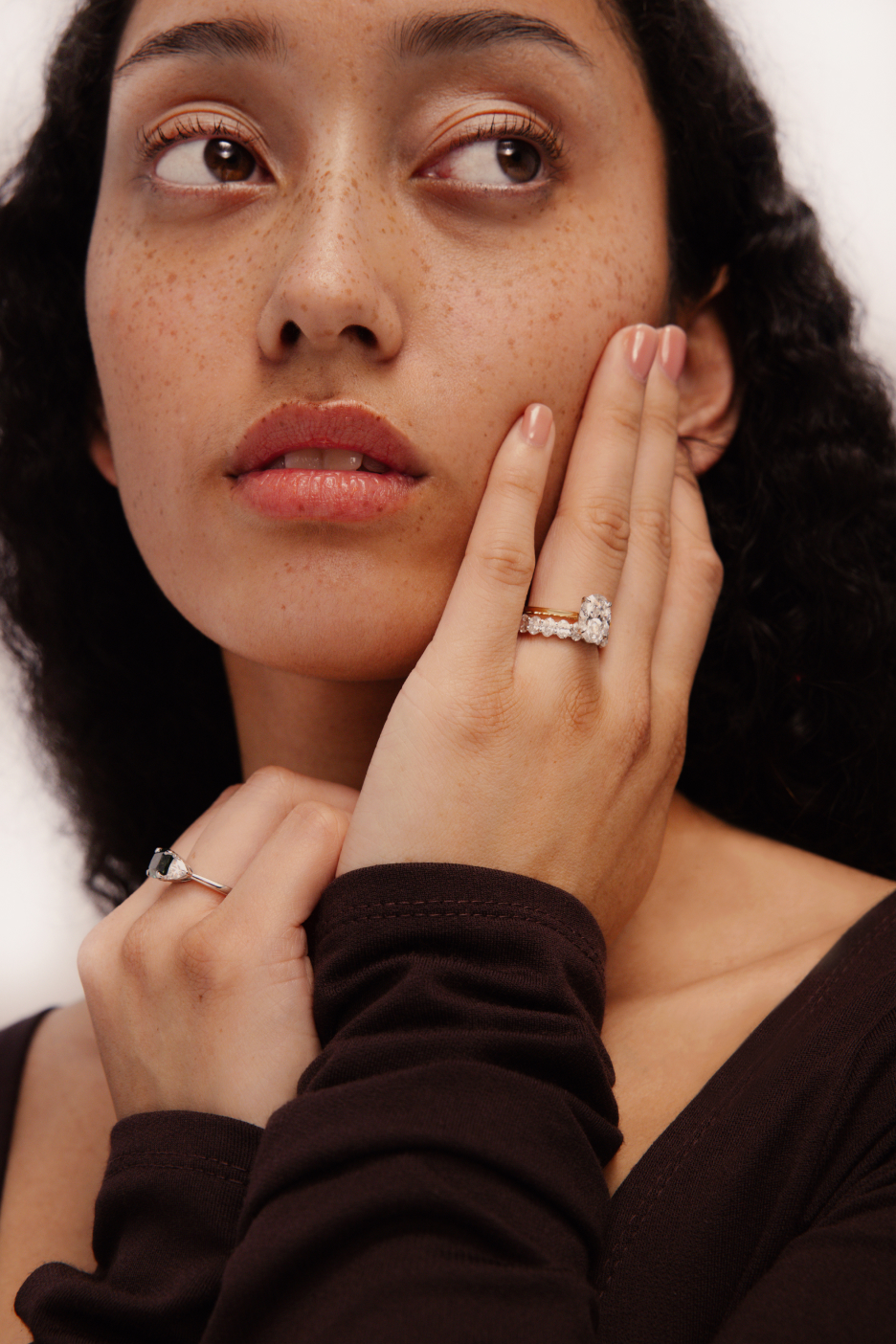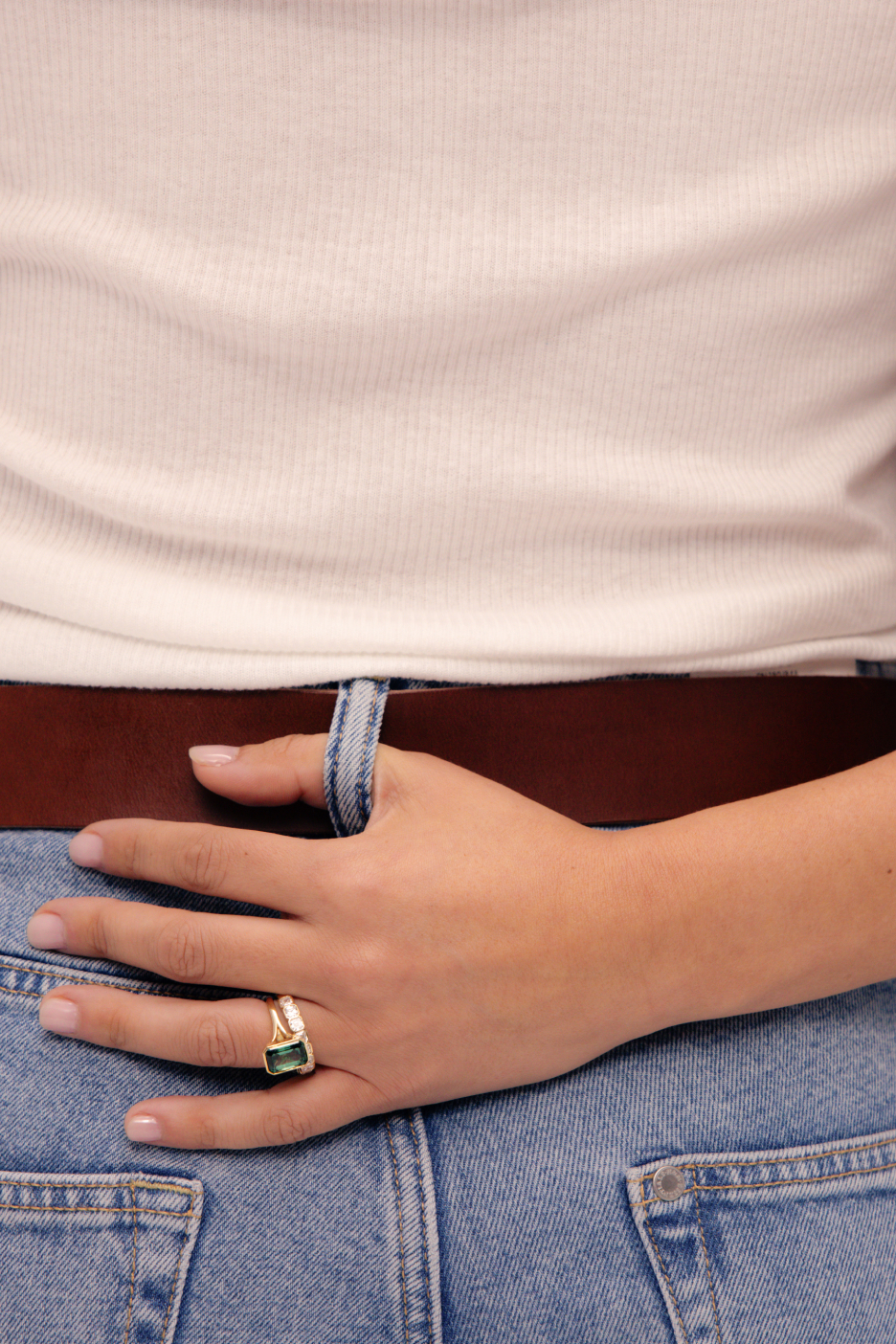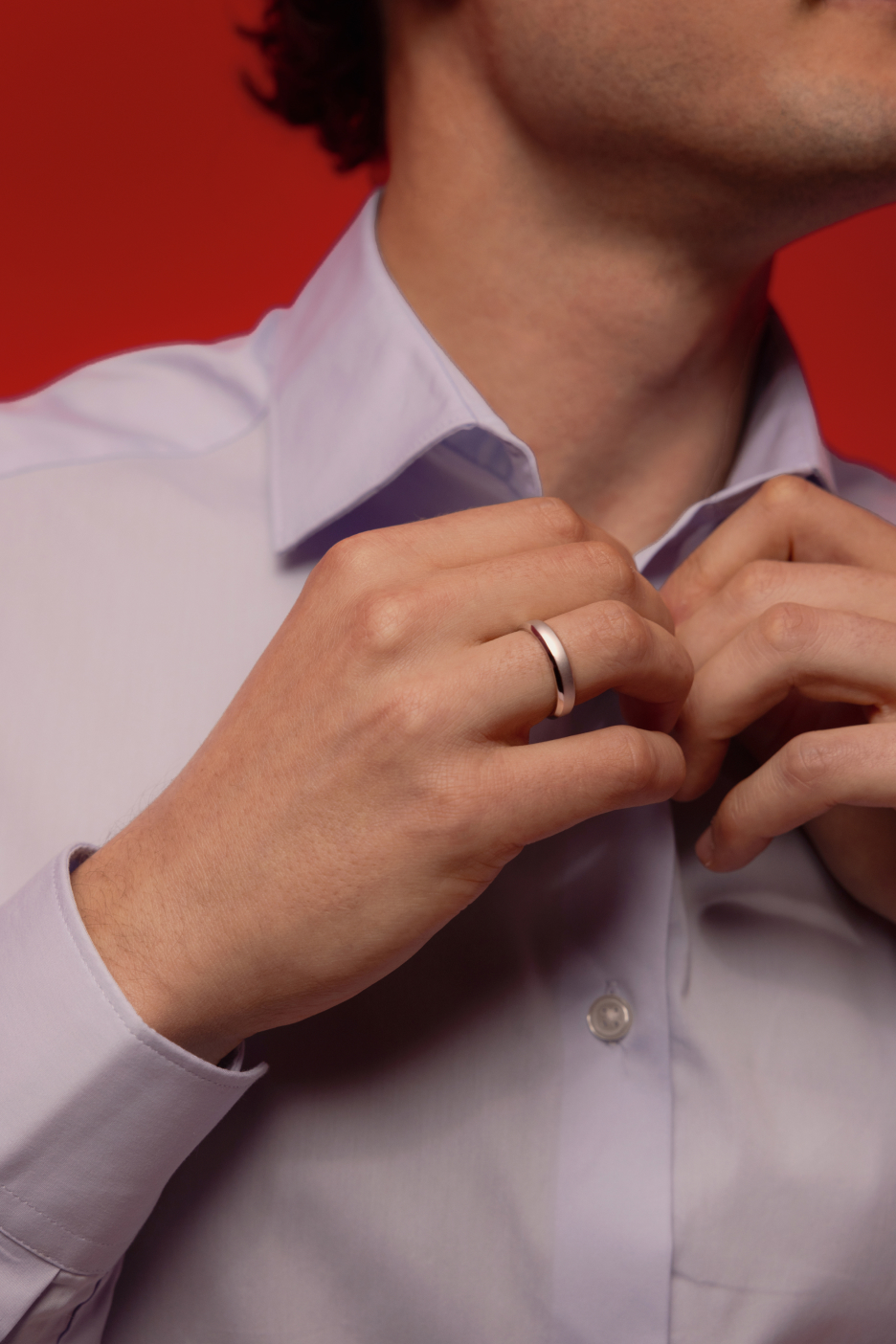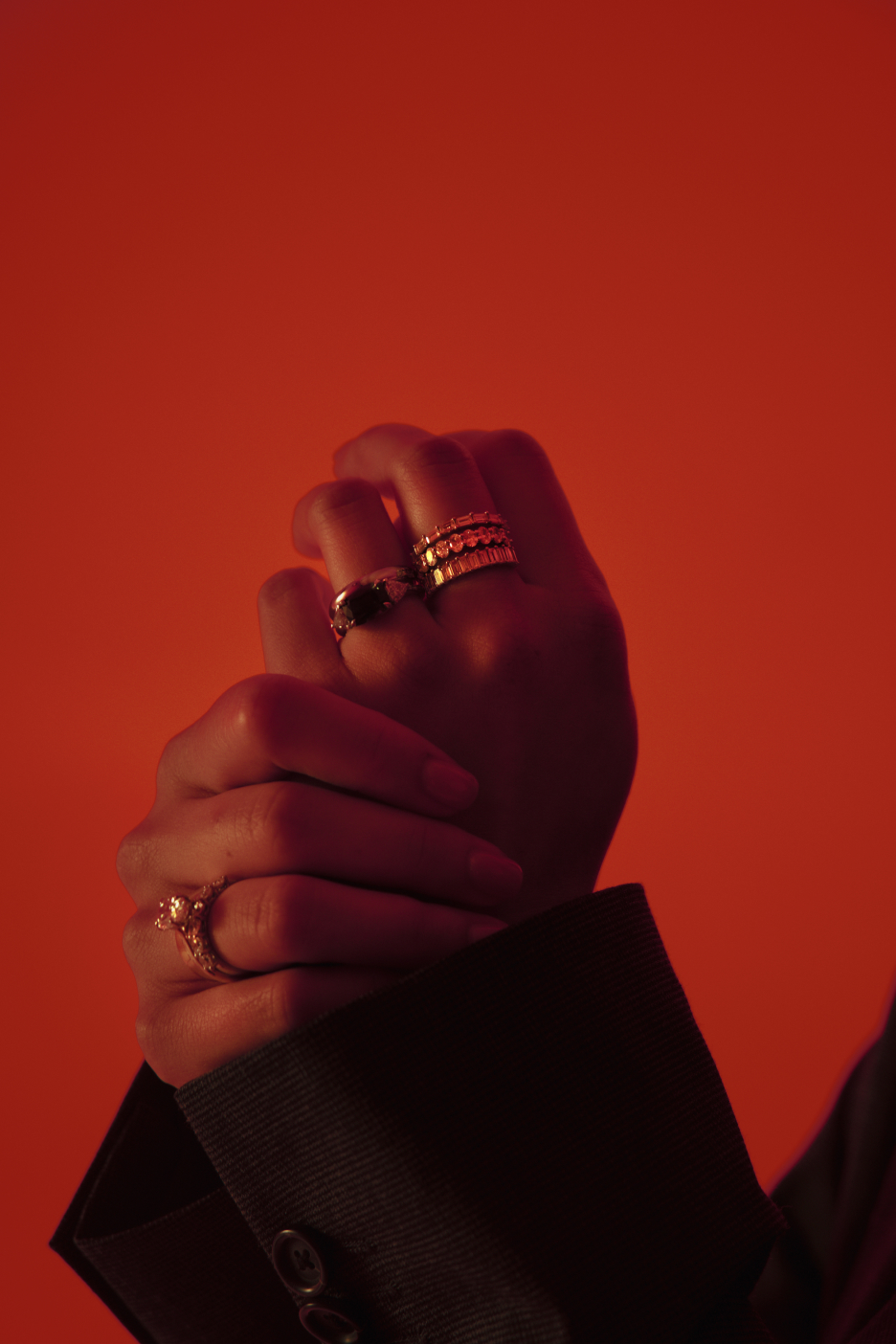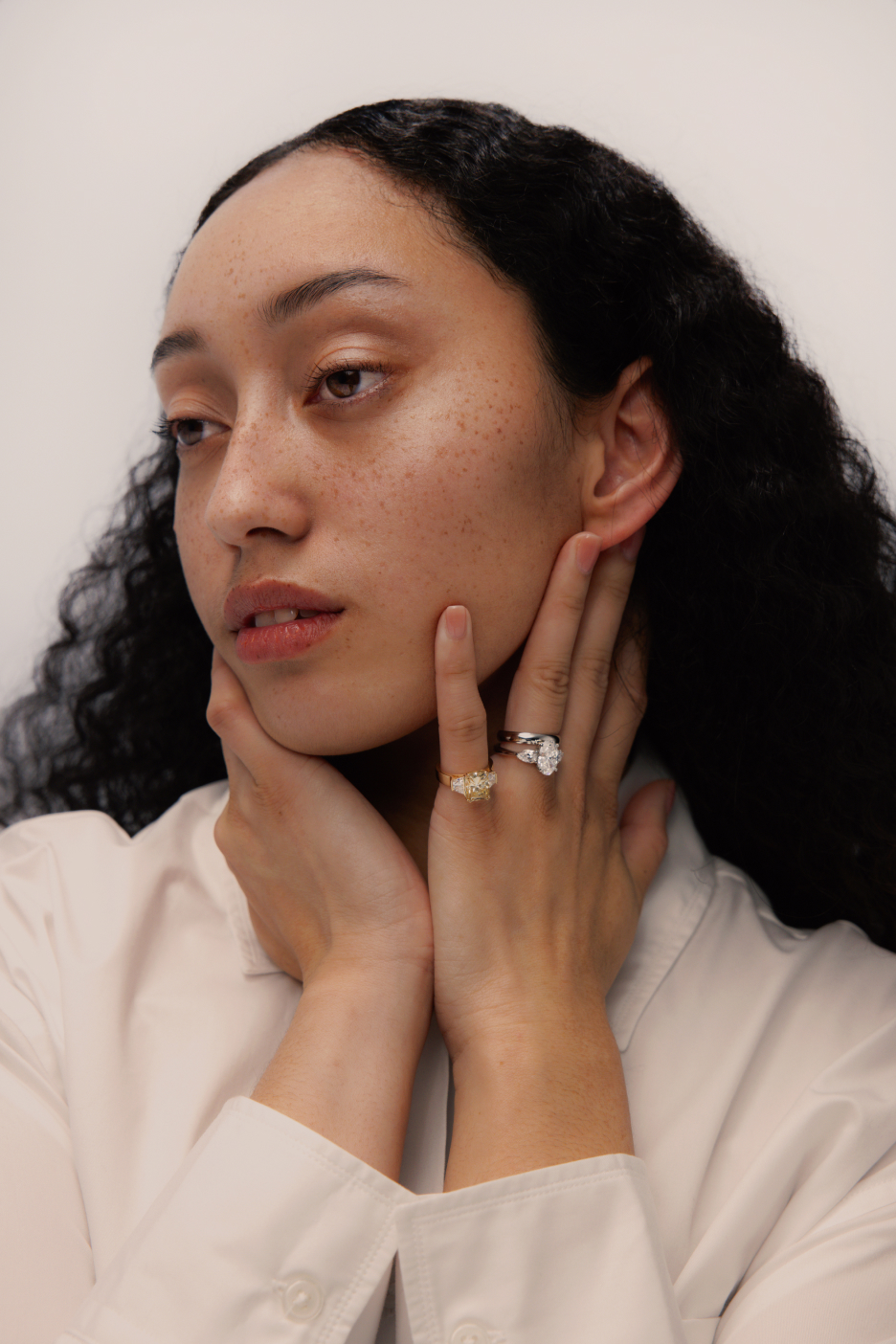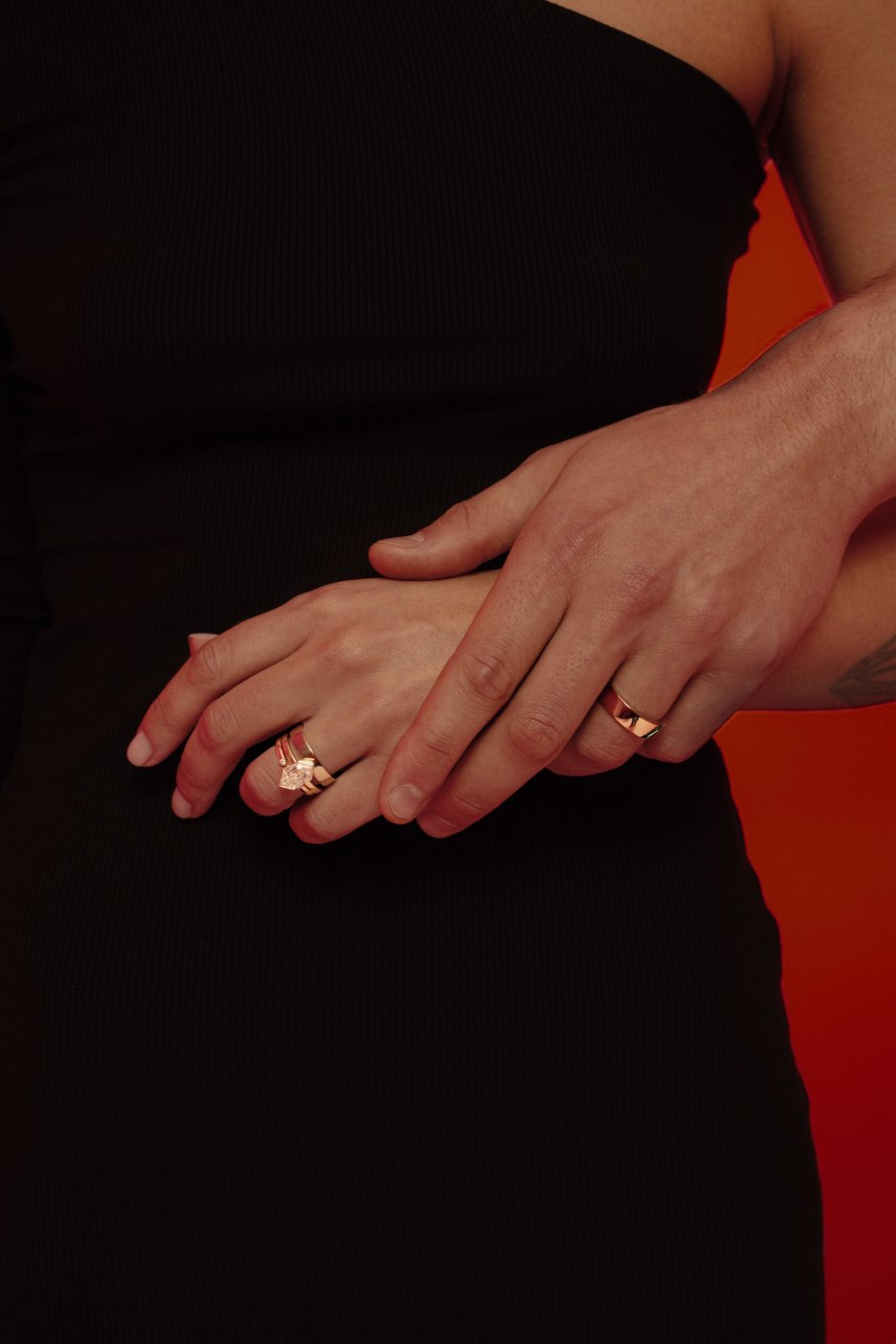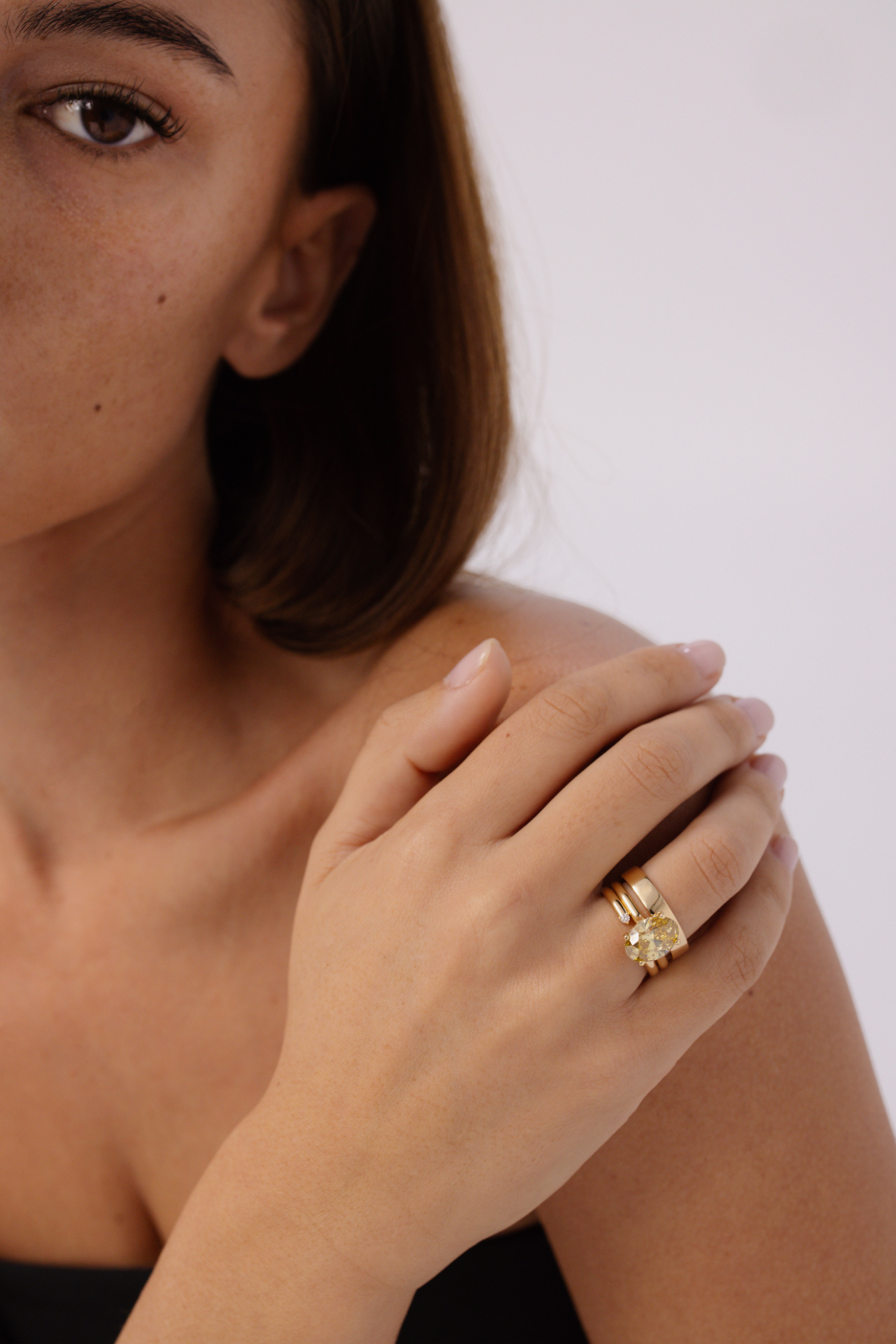Parts of a Diamond in an Engagement Ring NZ

Crafting your perfect engagement ring is a journey – and it can start to feel overwhelming when you include diamond terminology.
In this article, we break down the key terms and provide you with the vocabulary to talk about the different parts of a diamond.
This is also why at Four Words, we have our own Standard. This is where we do the hard, confusing part, for you by picking the best diamonds that the eye can see. So you never need to worry about a thing – even the different parts of a diamond.
Crown
The portion of a diamond that extends from the girdle upward and encompasses the table is referred to as the crown. Deeply cut diamonds often have larger crowns. Shallow cut diamonds have relatively limited crown surface area.
Table
The table of a diamond is found at the very top of the stone. It is responsible for a significant portion of a diamond's brightness and fire. This is the point at which most of the light enters and leaves the diamond. When the light enters through the table, it reflects and refracts light.
A bigger table in almost all diamond cuts will result in increased brilliance. Diamond cuts that include a wide table facet, such as the emerald cut, also carry more of its weight at the top. However, diamonds with big table facets need to have exceptional clarity because interior inclusions in the diamonds will be easily noticed. This is because large table facets allow more light to pass through the diamond.
Bezel facets
The triangle facets that border on the girdle of a cut gemstone are referred to as the bezel facets. These facets are also known as the top girdle facets.
Upper Girdle Facets
These facets may be found in the space between the kite facets and the girdle. Because of their location on the top part of the girdle, the facets that make up the upper girdle are given the name upper girdle facets.
Girdle
The girdle is the point at which the crown and the pavilion meet, and it is responsible for defining the perimeter of the diamond. It is suggested to avoid girdles that are graded either extremely thin, which makes diamonds more prone to chipping, or extremely thick, which puts too much weight in the middle, causing it to look smaller.
Pavilion
The area of a diamond located below the girdle is known as the pavilion. This aspect of the diamond's structure is often represented by the distinctive "V" shape that may be seen at the base of the stone. The pavilion is the section of the stone that reflects light back through the crown at the observer. It is considered to be "behind the scenes" of the structure.
Lower girdle facets
More so than any other facet, the bottom girdles of a well-cut diamond are responsible for the face-up aspect of the stone. This is because the bottom girdles of a diamond contribute to the formation of the arrows in the stone. The arrows that appear in a diamond are really the reflection of the pavilion mains. The width of the arrow is dictated by the two neighbouring lower girdle facets, and the crown facet shapes the arrowhead. In general, short lower girdles result in thick arrows, while thick arrows result from short lower girdles.
The lower girdle facet is now considered to be one of the minor aspects, despite the fact that it was formerly seen as an important facet. Because the commerce and the laboratory have been so deliberate in ignoring the lower girdles, customers have found it far simpler to be led to believe that the lower girdle aspects are of no significance.
Pavilion Facets
The facets of the pavilion are constructed in such a way that they reflect light back to the spectator. This improves the stone's brightness, which is the quantity of light it reflects, as well as its dispersion, which refers to the multicoloured "fires" that seem to come from inside the diamond.
Culet
A diamond's culet (pronounced kyoo-lit) is the very small point that can be found at the very bottom of the pavilion, where all of the pavilion's facets come together. The pavilion facets of the vast majority of diamonds are cut consistently at the appropriate angle and meet at a perfect point, which results in the absence of a culet (sometimes called a pointed culet). The culet is either a rough or polished facet, depending on whether or not the pavilion facets meet at a point. The existence of a culet brings the total number of facets on a diamond up to its full complement, but a pointed culet does not contribute to this total.
The culet may range from having none to having an extremely large amount. When a loose diamond is submitted for certification, the stone is seen both faces up and from the side to assess the size of the culet as well as the angle of the culet. A culet that has an acute angle is no longer evaluated as a culet but rather as an additional facet.
What next?
All these terms make up the physical characteristics of a diamond. And while you won’t need to worry about any of this when you buy a diamond engagement ring from Four Words, it is handy to know. Four Words picks out the best possible diamond that the eye can see according to your budget.
